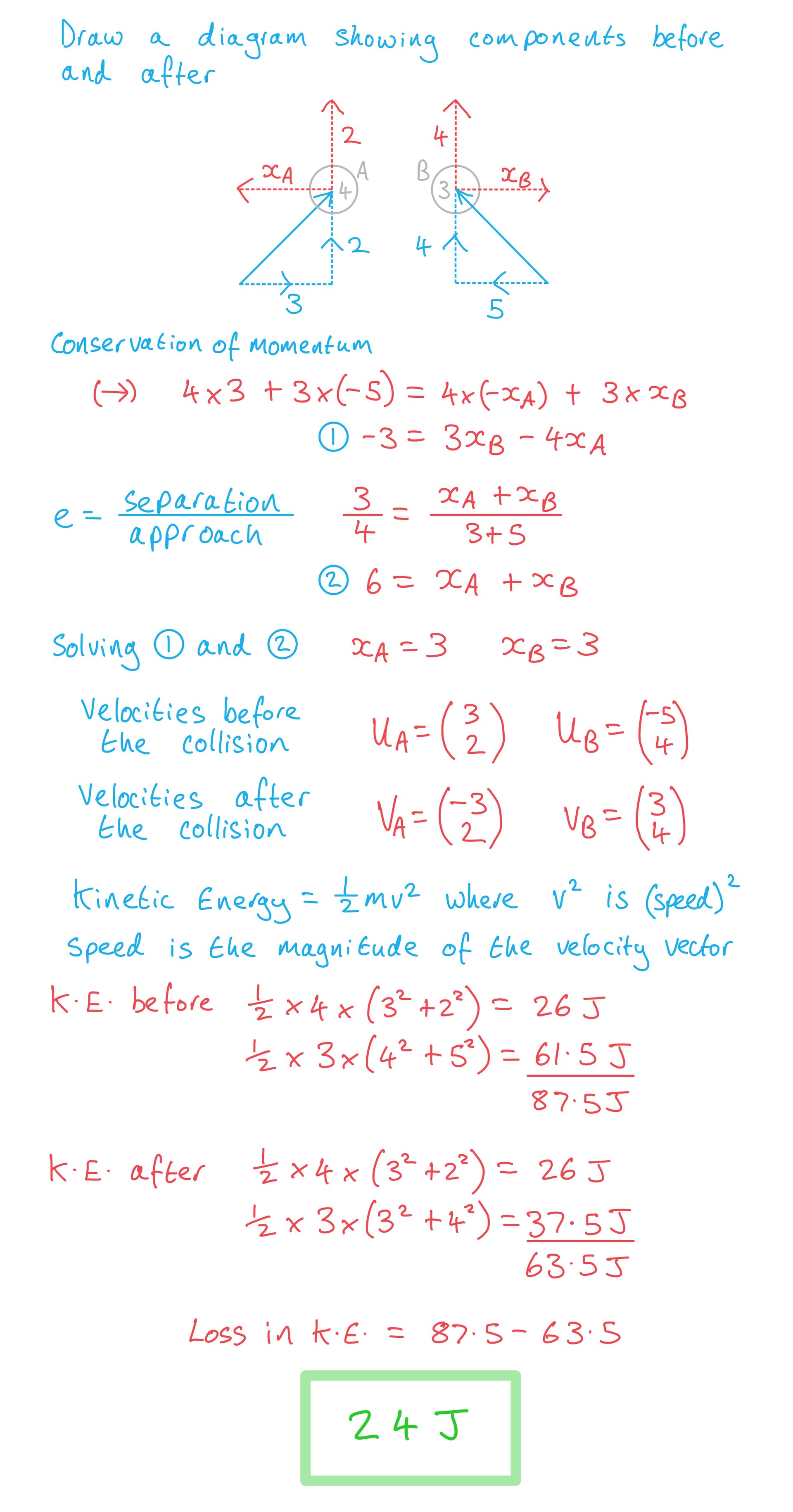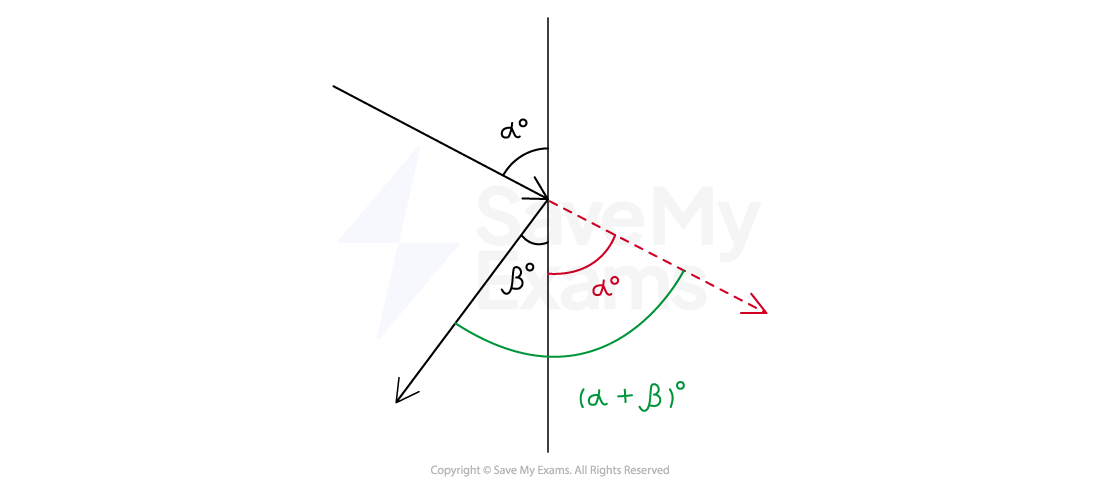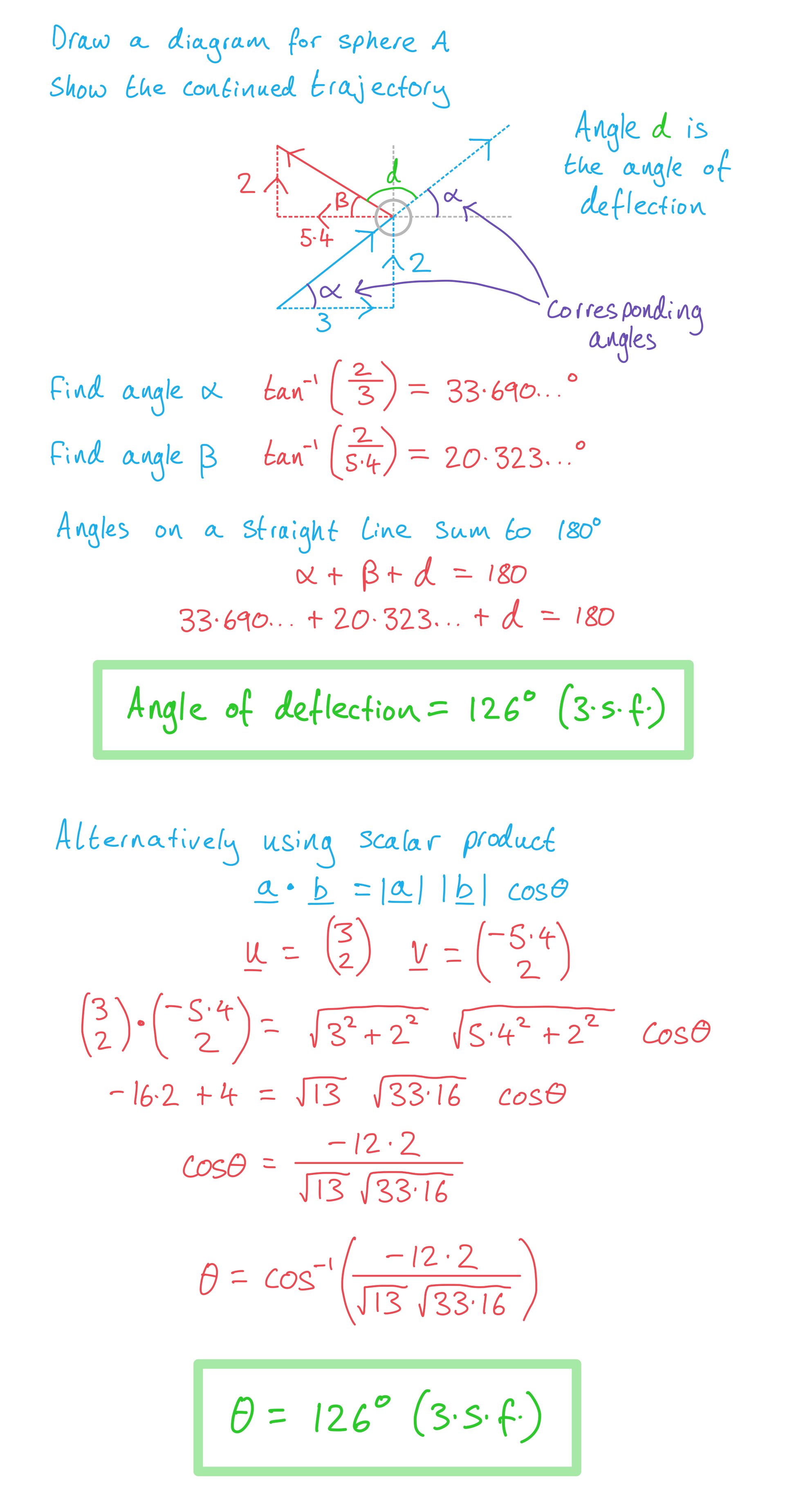Energy in 2D Collisions
How do I find the kinetic energy loss from a collision?
- A common question, usually as a follow up to a collisions question, is to find the kinetic energy lost as a result of the impact
- If
kinetic energy is conserved in the collision
- If
there will be a decrease in the total kinetic energy of the two particles
- If
- Recall that kinetic energy can be calculated using
- As the velocity is squared, its sign does not affect the kinetic energy
- Hence,
here is effectively the speed squared
- Hence,
- When dealing with motion in two dimensions, the velocity may be described in two components, e.g.
- To use this with
, the magnitude of the vector must be found, using Pythagoras
- In this case
- If
then
- In this case
- To use this with
- To find the loss in kinetic energy due to a collision, find the difference between the kinetic energy before the collision, and the kinetic energy after the collision
- The question may ask to find the loss in kinetic energy for one particular particle,
- or it could ask to find the total loss in kinetic energy for both particles
- The question may ask to find the loss in kinetic energy for one particular particle,
Exam Tip
- When finding the speed from two components, your working will look like this:
- When finding kinetic energy, the speed is squared, so your working may look like this:
- It can be quicker to not do the square rooting part if you know you are only using it to find
- e.g.
- When finding kinetic energy, the speed is squared, so your working may look like this:
- You can also use the scalar product to find the kinetic energy:
-
where
is the vector form of the velocity
-
Worked example
A smooth sphere A of mass 4 kg is moving on a smooth horizontal surface with velocity . Another smooth sphere B of mass 3 kg and the same radius as A is moving on the same surface with velocity
. The spheres collide when their line of centres is parallel to
. The coefficient of restitution between the spheres is
.
Find the kinetic energy lost in the impact in total.







